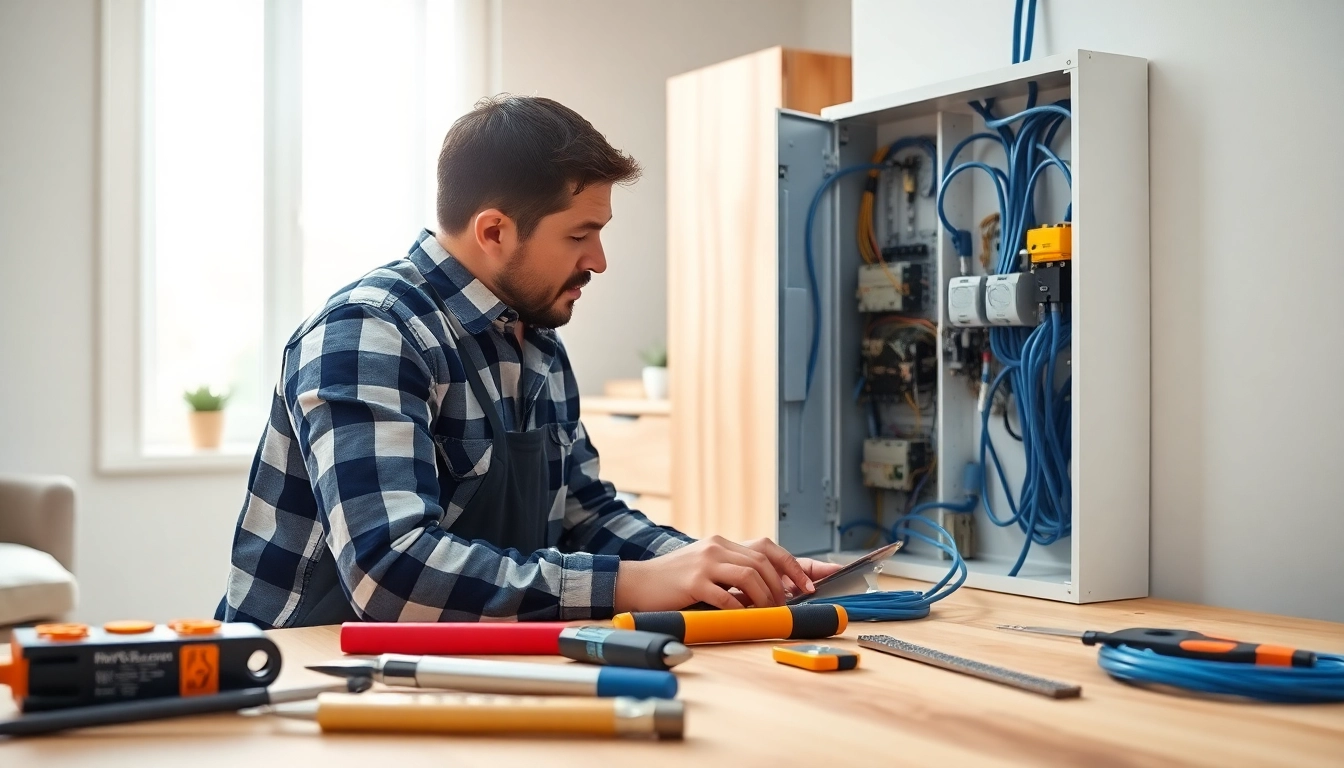1. What is an Electrical Panel?
1.1 Definition and Components
An Electrical Panel, often referred to as a breaker box or service panel, is a crucial component of any electrical system in residential and commercial properties. It acts as a central hub where the main electrical feed from the utility company is distributed to different circuits throughout the building. The panel houses various electrical components, including circuit breakers or fuses, which control the electrical supply to each circuit. Key components of an electrical panel include:
- Main Breaker: This is the switch that controls the electricity entering the panel, providing a way to shut off power to the entire system.
- Circuit Breakers: These devices protect the wiring and appliances by stopping the flow of electricity in case of overloads or short circuits.
- Bus Bars: These metal strips distribute electricity from the main breaker to the individual circuit breakers.
- Neutral and Ground Bars: These bars are where all the neutral wires and ground wires are connected for safety and circuit integrity.
1.2 Functions of an Electrical Panel
The primary function of an electrical panel is to safely distribute electricity to various parts of a building while offering protection from potential faults. This includes:
- Load Balancing: The panel allows for balancing the electrical load across various circuits, preventing overloading on a single circuit.
- Overcurrent Protection: By tripping breakers during overload conditions, electrical panels protect wiring and devices from damage.
- Isolation: The main breaker provides a means to isolate the electrical system from the utility supply, crucial for maintenance and emergencies.
- Accessibility: It serves as a central point for accessing electrical supply, making troubleshooting and repairs more manageable.
1.3 Types of Electrical Panels
Understanding the different types of electrical panels is essential for homeowners and electricians alike. The main types include:
- Load Centers: The most common type for residential applications, featuring multiple circuit breakers that manage various household circuits.
- Main Breaker Panels: These include a main breaker and components specifically designed for whole-home circuit distribution.
- Sub Panels: Used to extend an electrical system, they are smaller panels connected to a main panel and often serve a specific area or purpose.
- Smart Panels: These modern panels offer enhanced functionality, such as monitoring energy use and providing smartphone integration for control and alerts.
2. Signs You Need to Upgrade Your Electrical Panel
2.1 Frequent Circuit Breaker Trips
If you notice that circuit breakers frequently trip, this is often a sign that the panel is unable to handle the current load. Each breaker is designed to handle a specific amount of electrical current; when this threshold is exceeded, it will trip to protect the circuit. Frequent trips can indicate:
- An insufficient panel to meet your current electrical demands.
- Faulty wiring or devices that may need to be serviced or replaced.
- Poorly distributed loads across the panel.
Addressing this can be critical in preventing potential electrical fires or damage to appliances.
2.2 Increased Energy Demands
As households increase their reliance on electronic devices—smart homes, appliances, and other technology—the existing electrical panel may become inadequate. Consider an upgrade if you find yourself:
- Using higher wattage appliances like electric vehicle chargers or HVAC systems.
- Performing renovations or adding additional circuits for new rooms or appliances.
- Experiencing flickering lights when multiple devices are in use.
2.3 Age of the Electrical Panel
Electrical panels have a lifespan, typically around 25 to 40 years, depending on usage and manufacturer. If your panel is older than this, it may not only be outdated but also a safety hazard due to wear and tear. Signs of age include:
- Corrosion on the metal components.
- Heat damage or burn marks around the breakers.
- Limited capacity compared to modern standards.
Given the potential risks of maintaining an older panel, a replacement might be in order to ensure safety and compliance with current electrical codes.
3. Benefits of Upgrading Your Electrical Panel
3.1 Enhanced Safety Features
Upgrading your electrical panel introduces several safety enhancements, including:
- Modern Circuit Protection: New panels often include arc-fault circuit interrupters (AFCIs) and ground-fault circuit interrupters (GFCIs), which provide added protection against electrical shocks and fires.
- Thermal Image Technology: Newer panels may incorporate thermal imaging technology to detect hot spots and prevent potential failures.
- Improved Wiring Standards: Upgrades often include wiring that meets today’s electrical safety codes, significantly lowering the risk of hazards.
3.2 Improved Energy Efficiency
New electrical panels can lead to overall improved energy efficiency in multiple ways:
- Energy Monitoring: Many smart panels offer real-time monitoring of usage which helps identify and reduce unnecessary consumption.
- Load Management: Advanced panels distribute energy more efficiently, reducing waste and saving on electricity bills.
- Support for Energy-Efficient Devices: Upgrades ensure compatibility with modern energy-efficient appliances and renewable energy systems, like solar energy setups.
3.3 Higher Property Value
Investing in an electrical panel upgrade can also enhance your property’s value. Potential buyers will appreciate:
- Updated systems that meet safety and municipal standards.
- The ability to support modern electrical demands without significant additional costs.
- A record of enhanced safety features, reducing insurability risks.
4. The Electrical Panel Upgrade Process
4.1 Assessing Your Home’s Needs
Before initiating an upgrade, a thorough assessment of your home’s electrical needs is crucial. This involves:
- Evaluating the types of appliances and devices currently in use.
- Calculating the total amperage required for current and future needs.
- Consulting with an experienced electrician to determine the appropriate panel size and type for your home.
4.2 Hiring a Qualified Electrician
Electrical panel upgrades require technical expertise and knowledge of local codes. Hiring a licensed electrician is imperative for:
- Ensuring safe and compliant installation.
- Proper handling of existing electrical systems.
- Minimizing risks during the upgrade process.
Be sure to check for credentials, references, and reviews to find a trustworthy professional.
4.3 Ensuring Compliance with Local Codes
Every state and municipality may have different regulations regarding electrical systems. Compliance is critical to:
- Avoid hefty fines or restrictions on your property.
- Ensure the panel operates safely and effectively.
- Protect your investment by increasing the resale value of the property.
5. Maintaining Your Electrical Panel
5.1 Routine Inspections
Regular inspections of your electrical panel are key to identifying potential issues early. Homeowners should:
- Schedule annual inspections with a qualified electrician.
- Check for rust, corrosion, or burning smells around the panel.
- Ensure circuit breakers are functioning properly and not excessively hot during operation.
5.2 Common Maintenance Tips
Proper maintenance can prolong the life of your electrical panel. Consider these practices:
- Keep the area around the panel clear and accessible for safety and maintenance.
- Regularly update appliance load expectations and upgrade accordingly when necessary.
- Consider installing surge protectors to safeguard against power surges.
5.3 Knowing When to Call a Professional
While some maintenance tasks can be performed by homeowners, there are times when professional help is required:
- If you experience frequent tripping without an apparent cause.
- If there are signs of water damage or severe corrosion.
- When adding new circuits that require complicated installations.



